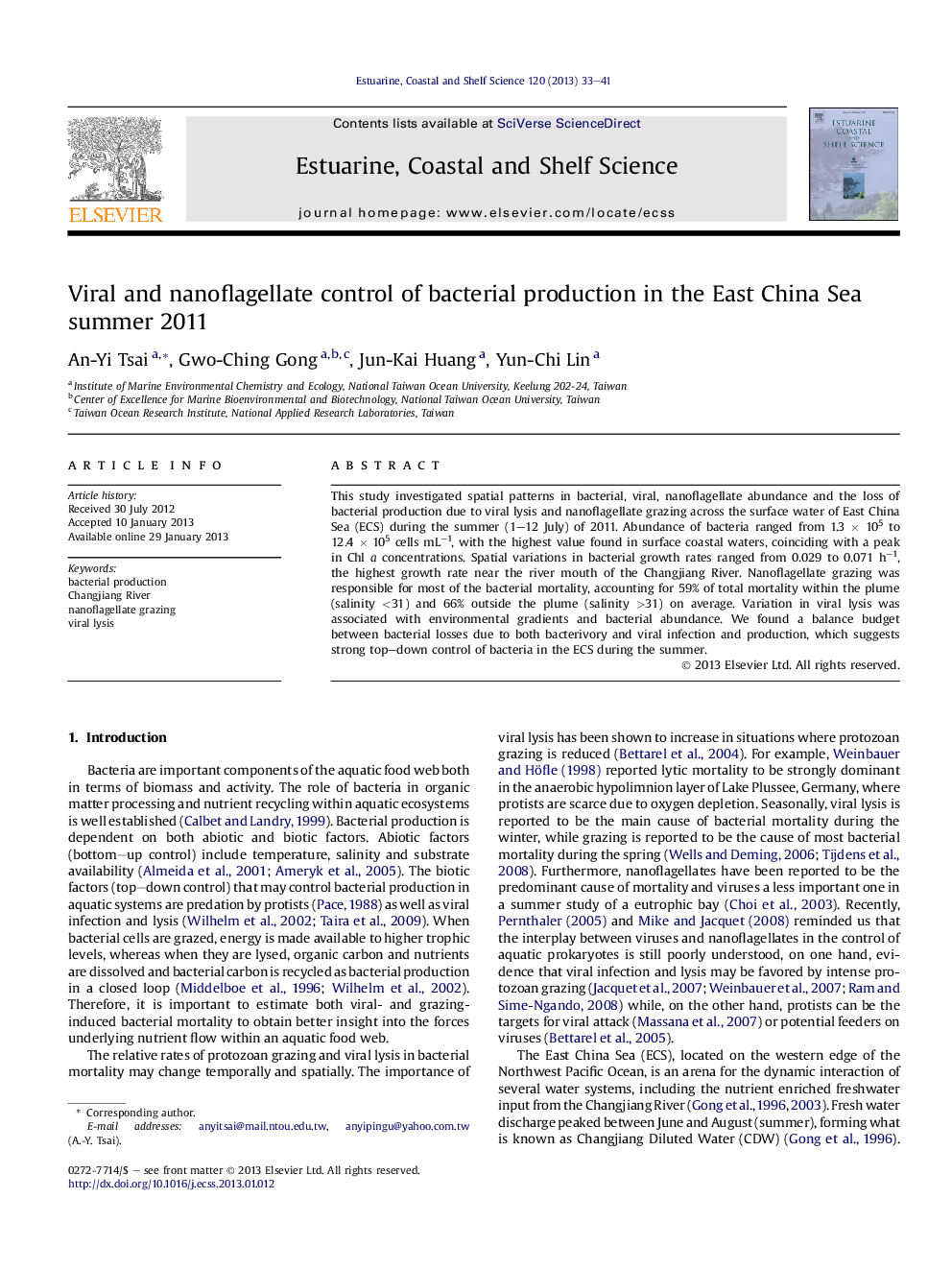| Article ID | Journal | Published Year | Pages | File Type |
|---|---|---|---|---|
| 4539933 | Estuarine, Coastal and Shelf Science | 2013 | 9 Pages |
This study investigated spatial patterns in bacterial, viral, nanoflagellate abundance and the loss of bacterial production due to viral lysis and nanoflagellate grazing across the surface water of East China Sea (ECS) during the summer (1–12 July) of 2011. Abundance of bacteria ranged from 1.3 × 105 to 12.4 × 105 cells mL−1, with the highest value found in surface coastal waters, coinciding with a peak in Chl a concentrations. Spatial variations in bacterial growth rates ranged from 0.029 to 0.071 h−1, the highest growth rate near the river mouth of the Changjiang River. Nanoflagellate grazing was responsible for most of the bacterial mortality, accounting for 59% of total mortality within the plume (salinity <31) and 66% outside the plume (salinity >31) on average. Variation in viral lysis was associated with environmental gradients and bacterial abundance. We found a balance budget between bacterial losses due to both bacterivory and viral infection and production, which suggests strong top–down control of bacteria in the ECS during the summer.
► This study investigated spatial patterns in the effect of viral lysis and grazing on bacteria. ► Nanoflagellate grazing was responsible for most of the bacterial mortality. ► Strong top–down control of bacteria in the ECS during the summer. ► Variations in viral lysis were associated with environmental gradients and bacterial abundance.
